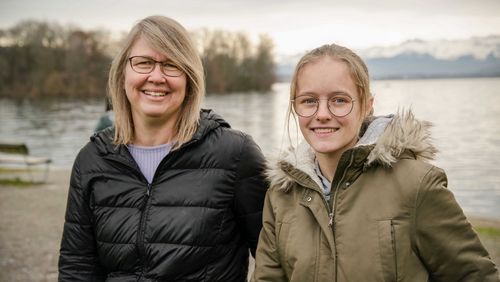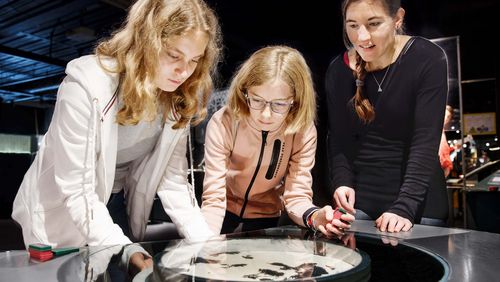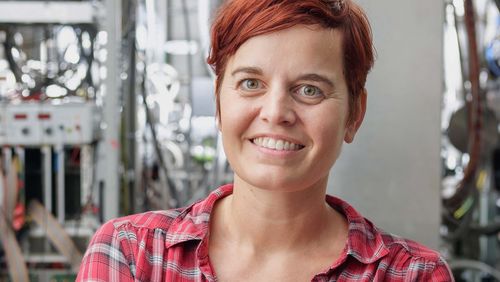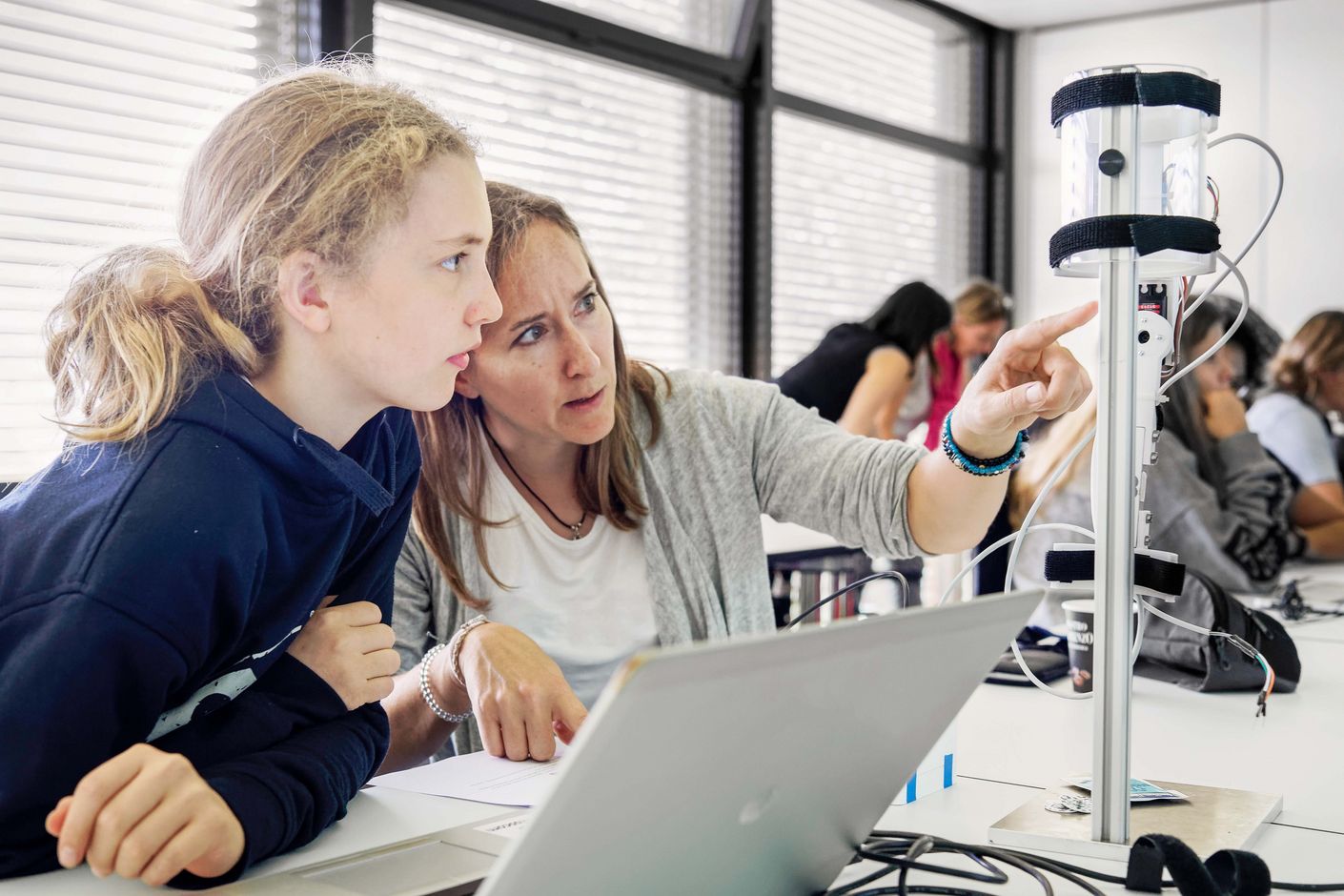
Mina wants to be an engineer
Girl power for technology: with its mentoring programme “Swiss TecLadies”, the Swiss Academy of Engineering Sciences SATW wants to encourage young women to aspire to technical careers. The first mentoring programme will last until July 2019.
They are a rare, but highly committed few: women in technical professions. In branches such as information technology and engineering, women are a clear minority, but when the Swiss Academy of Engineering Sciences SATW called for mentors for the Swiss TecLadies programme, no less than 70 women from a diverse range of professions volunteered. From mechanical engineers, to computer scientists and nanoscientists, the mentors give 13- to 16-year-old girls—the mentees—real-life insight into the world of technical professions. By visiting mentors at their place of work and getting involved in their activities, the mentees gain a realistic impression of the professional and personal experiences of women in technical fields. The Swiss TecLadies mentorships are supplemented by visits to companies and personal coaching sessions. Raising the awareness of teachers and parents is also part of the programme.
Tricky questions
The first cycle of the mentoring programme began in September 2018, but not before the mentees had proved their technical prowess in an online challenge with no shortage of difficult questions: How do submarines resurface? What keeps trains on their tracks? How does Google know what shoes I want to buy? The online challenge on the Swiss TecLadies website was open to all interested persons, but only girls aged 13 to 16 who attained the required number of points could qualify for the mentoring programme. The programme is designed to appeal to young women who demonstrate talent and enthusiasm for technical subjects, but who have not yet considered pursuing a degree in mathematics, informatics, the natural sciences or technology—the so-called STEM subjects.
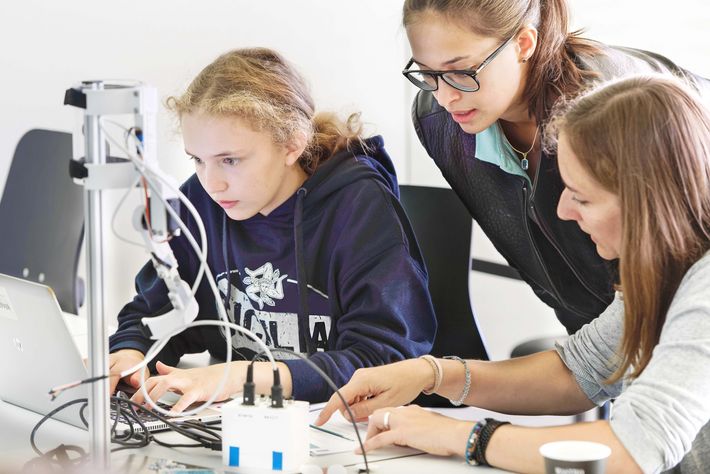
Socialisation matters
But why is the percentage of women studying for technical degrees and working in technical industries so low? (See figure page 67.) Astrid Hügli, head of the Swiss TecLadies programme, believes it has nothing to do with a difference in talent between boys and girls, but is instead due to socialisation differences: fathers tend to involve their sons more in technical tasks such as building and repairing things. And at school, girls receive less encouragement in science and technical subjects. Hügli stresses that these are only two examples. Compared to the countries of Scandinavia and Central and Eastern Europe, girls in Western Europe have always received less encouragement to pursue technical careers: “Boys are often thought to be more capable of mastering technical subjects and thus technical professions.” But this attitude is unfounded: according to the 2018 education report of the Swiss Coordination Centre for Research in Education SCCRE, young women routinely outperform their male peers in final apprenticeship examinations—including in professions with a high percentage of men.
Boosting self-confidence
And yet many girls lack confidence in their ability to learn a technical profession. “That’s why we need a targeted programme to support girls,” says Astrid Hügli. Although the junior talent programmes at SATW have always been open to both girls and boys, an SATW study clearly showed that girls need more encouragement both at school and at home. With Swiss TecLadies, SATW is now offering a programme specifically for young women. The online challenge identifies talent, while the mentors give the girls a realistic impression of technical careers and help build their self-esteem—because girls need confidence to take on such professions. “Young women lack role models,” says Astrid Hügli. And the chance of meeting a female role model by coincidence is very low. That is why Swiss TecLadies actively brings talented girls and professional women together.
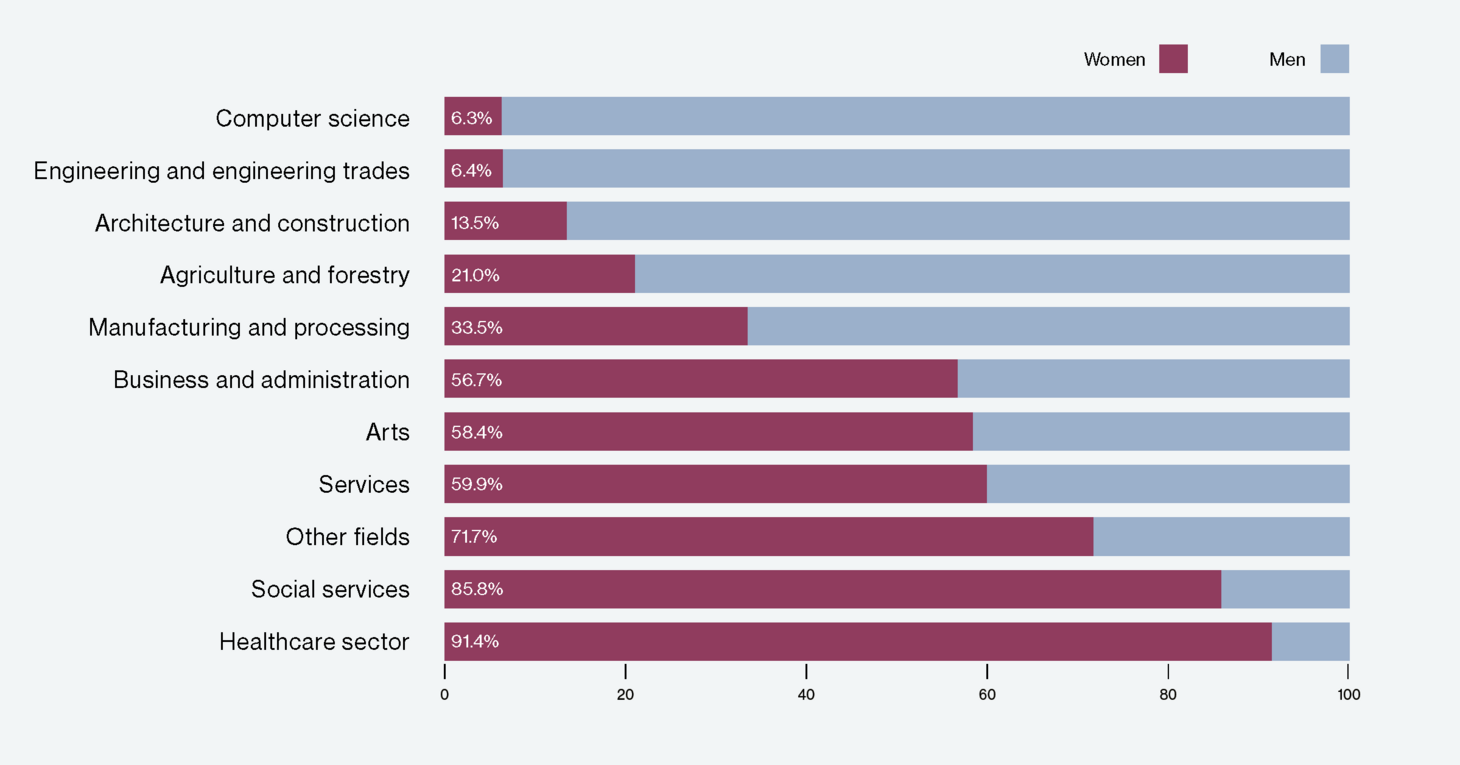
Still today, too few girls pursue an education in computer science, engineering and other technical careers. Source: FSO
Effective role models
Through the programme, SATW aims not only to counteract the shortage of skilled workers in the long term, but also to foster diversity in technical industries. “Studies show that mixed gender teams are often more innovative,” says Astrid Hügli. Launched at the beginning of 2017, the Swiss TecLadies programme is receiving funding from the Werner Siemens Foundation for a five-year period. Within that time, two programme cycles should be completed: 2018 to 2019 in the German-speaking area of Switzerland, and 2020 to 2021 in both the German- and French-speaking areas. If the programme proves successful, it will continue to take place every two to three years. Swiss TecLadies also receives financial support from the Federal Office for Gender Equality via the skilled workers initiative of the Swiss Confederation.
New professions, new opportunities
Astrid Hügli is confident that the programme will help raise the percentage of women working in technical professions. And fortunately, certain societal developments are leading in this direction—after all, both girls and boys grow up as digital natives with smartphones and laptops. And the new Swiss national curriculum (Lehrplan 21) is addressing the shortage of skilled workers in STEM subjects by introducing technical topics in primary school. Moreover, many new STEM professions are evolving that are not yet dominated by one gender—and this will help break down stereotypes. Whether these future jobs are filled by men or women will hopefully soon be irrelevant. What matters is that career opportunities are pursued with enthusiasm and skill.
Text: Adrian Ritter
Photos: Felix Wey
